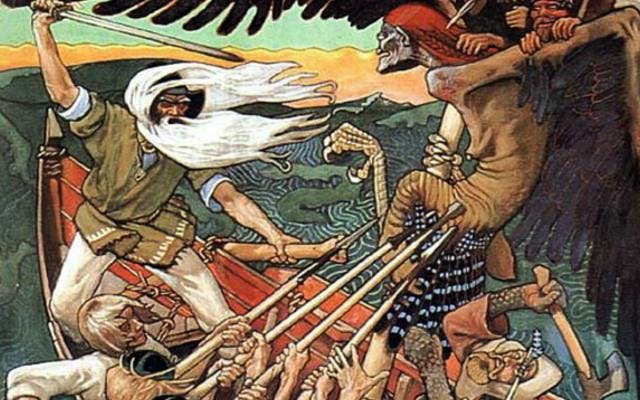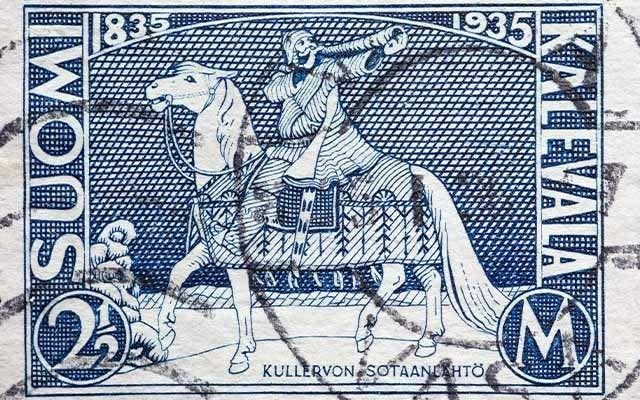
The Kalevala: 5 things to know about Finland’s national epic
Curious as to where February’s Gin of the Month gets its name? Here are five key facts about the original Kalevala - an epic Finnish poem that's as magical as the gin named after it.
When Moritz set out to make his beautiful gin, he set up his distillery in North Karelia. This mysterious place was home to his mother’s family, but it’s also been central to Finnish identity and folklore for thousands of years.
Considered more culturally ‘pure’ thanks to its isolation from neighbouring Sweden and Germany, Karelia is also the setting of Finland’s most famous national epic: the Kalevala. Moritz chose this name for his gin because it’s a symbol of Finland’s unity and ancient culture; just like Kalevala gin, this national epic is a celebration of Finland’s identity.
But what is the Kalevala, and why is it so important to Moritz and his fellow Finns? Here are five things to know about this unique piece of literature:
1. It’s a collection of poems of Finnish folklore
Nobody sat down and wrote the Kalevala from beginning to end. Rather, it’s a disparate collection of some 22,795 verses, divided into 50 chapters or cantos, collected from all over the country.
These poems – often set to music and performed as a song by two singers – were passed down through oral tradition for centuries. In 1833, physician and linguist Elias Lönnert began travelling the country, writing these poems down and shaping them into one long epic.
To this day it’s uncertain how much of what’s called the Kalevala is comprised of actual folk poetry and how much Lönnert wrote himself.
2. It played an important role in Finland’s independence movement
Until 1917, Finland was actually Russian. But the Kalevala – and the intense and growing interest in a purely Finnish culture and nation that it reflected – played a big role in the Finnish people’s drive towards independence.
To this day, the Kalevala is regarded as an important symbol of Finnish cultural achievement. Many Finnish corporations and towns take their names from the Kalevala (including, of course, February's Gin of the Month) and Finnish artists draw on this national epic for inspiration across a number of fields.
3. It’s all about love and marriage
The Kalevala Day is celebrated in Finland on the 28th of February, and the proximity to Valentine’s Day – while purely coincidental – is fitting. That’s because this epic is, at its heart, all about love and marriage.
The poems and songs follow three major characters through their quests to find brides. It’s rough going; the main protagonist of the poems, the first man Väinämöinen, never manages to settle down (one woman, in fact, drowns herself rather than marry him).
For Ilmarinen, the creator of the Sampo, things are a bit happier. After undergoing numerous quests, he wins the hand of the Maiden of the North. Unfortunately she’s torn apart by wolves and bears, and the replacement wife he forges out of gold and silver is too cold for him to love.
Even the main characters’ quest for Sampo, a magical contraption said to create good fortune, is destined to fail. The mysterious machine is lost at sea after a long and bloody battle over it, and in the end Väinämöinen sails away empty handed, leaving the Finns nothing but his stringed instrument and his songs as a legacy.
4. It may be partially based on real historical events
Whether or not the poems collected in the Kalevala are based on historical events is still debated by scholars today. Many think that Pohjola, the Kalevala’s wondrous land that is blessed by the wealth, prosperity and joy produced by the magical Sampo, is based on the eastern region of Karelia.
Indeed, Karelia – inexorably linked with greater Finland, but somehow a land apart, full of rich pine forests and clear lakes – has been sought after by many different parties for hundreds of years, much like the utopia of the Kalevala’s Pohjola. And, since most of the poems of the Kalevala were actually first documented by sources in Karelia, this theory is certainly an appealing one.
5. You can read it all for free

First published in 1835, the entirety of the Kalevala is in the public domain. That means it’s available to read – and completely for free! You can download the epic poem in its entirety in PDF form from the Internet or buy beautiful editions from Amazon for around £10. While it may take a while to work through, this fascinating folklore is certainly worth a read as you sip a Kalevala G&T.







